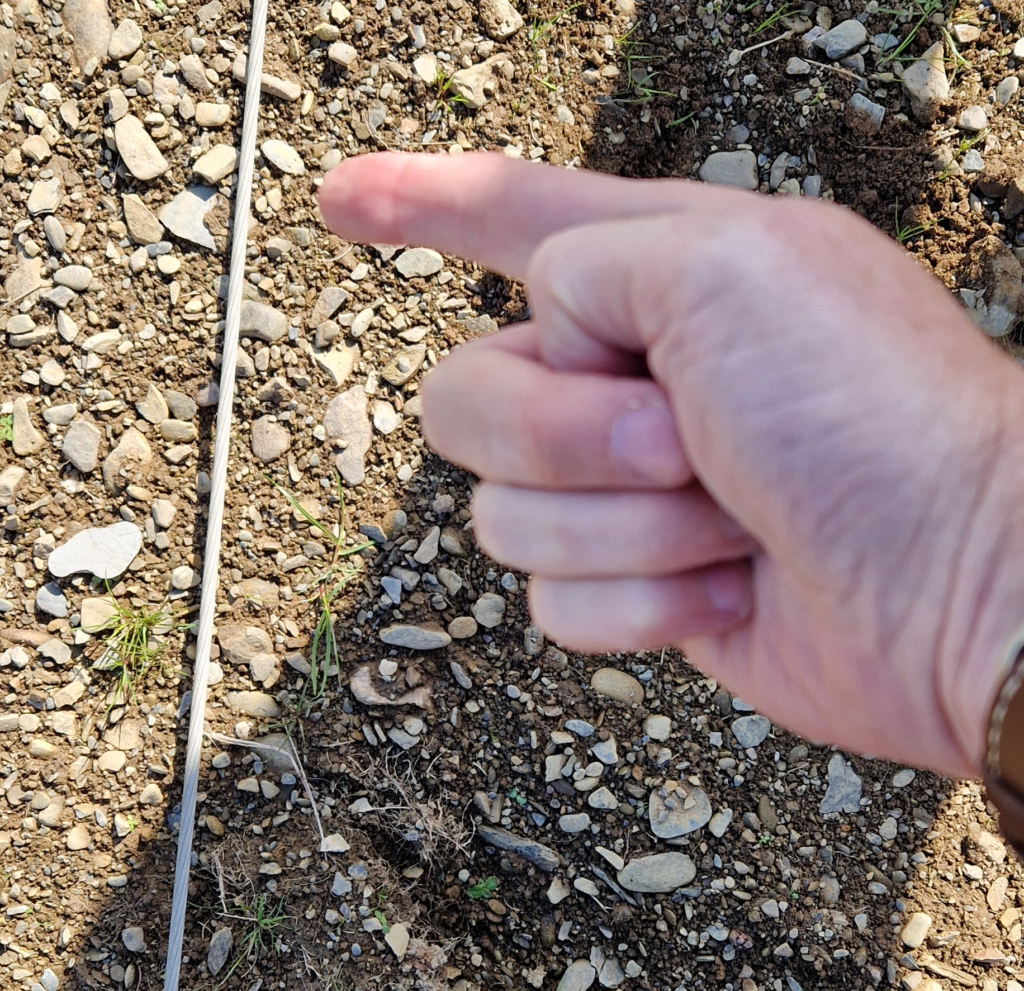I visited the solar farm yesterday. Its a long trip, but worth it. I had not been there for a while, so it was good to see progress. The reason I went on that day, was it was the day that the DNO (Distribution Network Operator) finally came and removed (recovered!) the 11kv line that ran right over the middle of our site, and redirected it around the farm, with a spur coming off to join into their substation. This was critical (and HUGELY DELAYED by insane bureaucracy) because without that line being gone, we could not install the final mounting tables and panels, or the last few inverters. There is now about a months work to go.
Its so hard to know with these things what is REALLY involved, so I half expected there to be two guys and a ladder on site, but in fact that was probably about 12 people, and multiple vans and cars and 2 tractor things and some people on those extendy platform things they use to go do stuff up telegraph poles, and a LOT of big phat cable. Here is some cable, with me for scale.

The big phat cables are the ones that connect the inverters to our switchgear and also the ones that go from that switchgear to the substation with the transformer in, so they are all roughly 400V cables. They are insanely, insanely heavy. Even heavier than they look, and they do not look light.
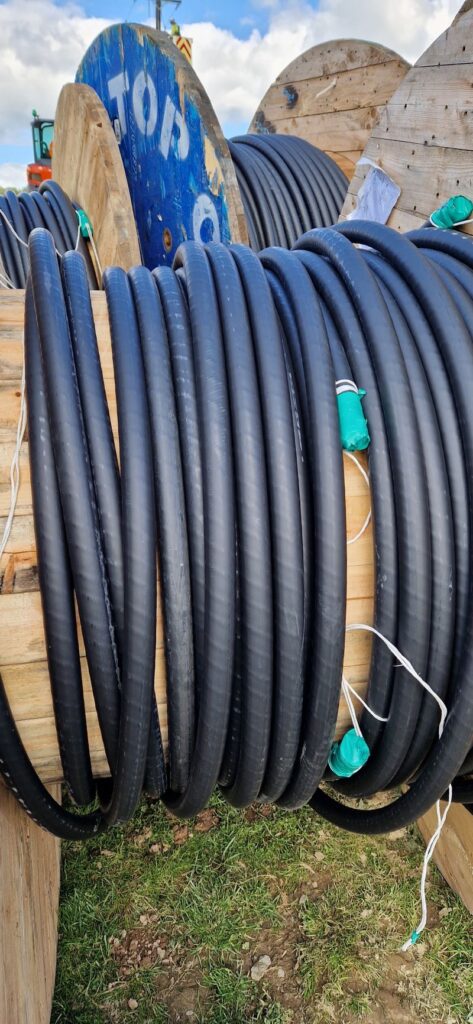
One of the big things that had changed since my last visit was the installation of our switchgear in a big metal shipping container. This is a big green thing, that was mostly assembled offsite, but then things need wiring into it. This is basically a switchboard where all the inverter cables get joined together ready to connect (still at 410V which is considered low voltage) to the DNO owned substation and transformer to take it from 410v to 11,000v. Annoyingly, due to earthing concerns, these two structures have to be a certain distance apart, BUT there is also a maximum distance apart they can be, for some technical reason, so its a bit tight, and nuts. Surely it makes sense to be one building? anyway… I had a good look inside the green box. Its big, you can walk around in there:
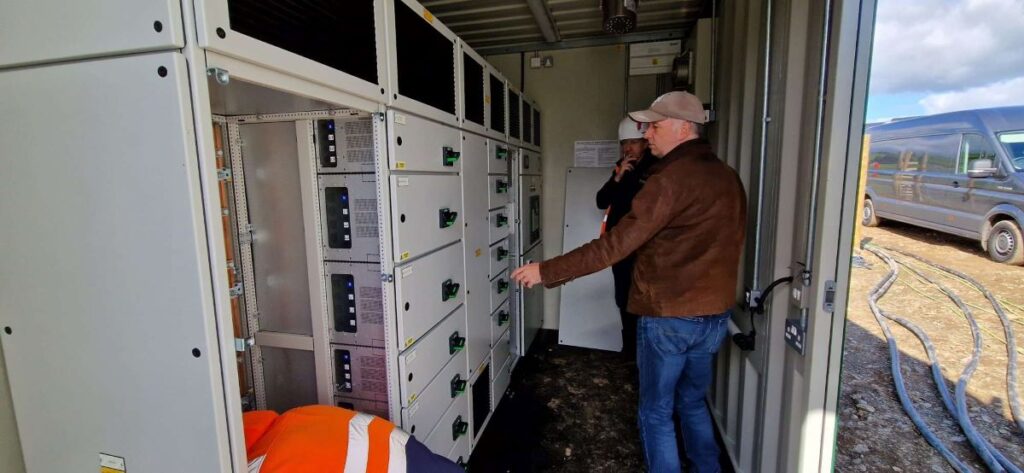
Maybe the most interesting bit in here will be the actual meter, but that is not installed yet (soon!) but also of interest are the copper busbars that all the cables coming in get attached to, so they can flow together as a single power source. Although amusingly there are two separate places for this, so its not actually single :D. In any case, these super chunky copper bars are LIVE when everything is energized:
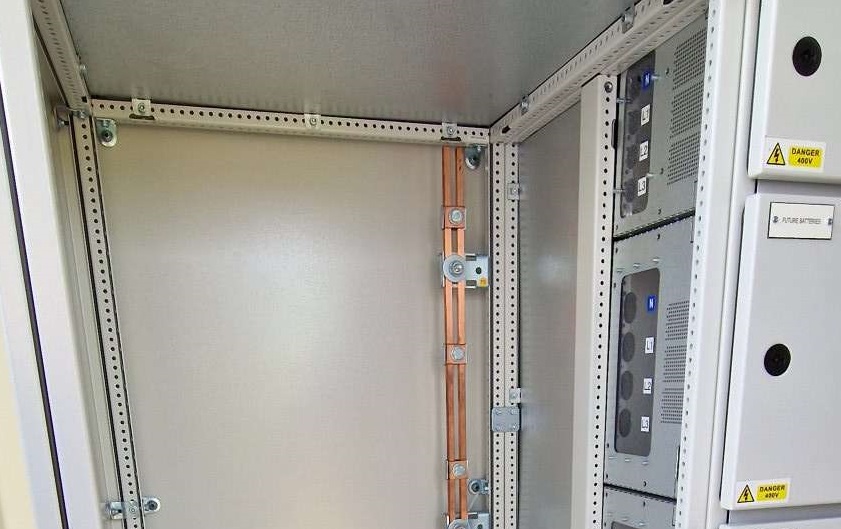
There are a lot of cool things in the box, but the most unusual, to me, and wacky are the big fire-suppression systems in the ceiling. I hope we never need them, but I guess you have to have them. All this stuff ends up being madly pricey. Anyway, here is a picture of an industrial automatic fire extinguisher :D

The other momentous thing is probably the sight (finally omg) of the DNO doing the work to move the old line and actually connect my site to the grid. It will now be connected, but not energised. We need the final panels, and then some paperwork and a ceremony called ‘witnessing’ to ‘commission’ the site. I am surprised we do not need to sacrifice a goat at this point, but it will probably just be throwing a switch and then some paperwork. Hopefully in a months time. Anyway, here are DNO people doing things:
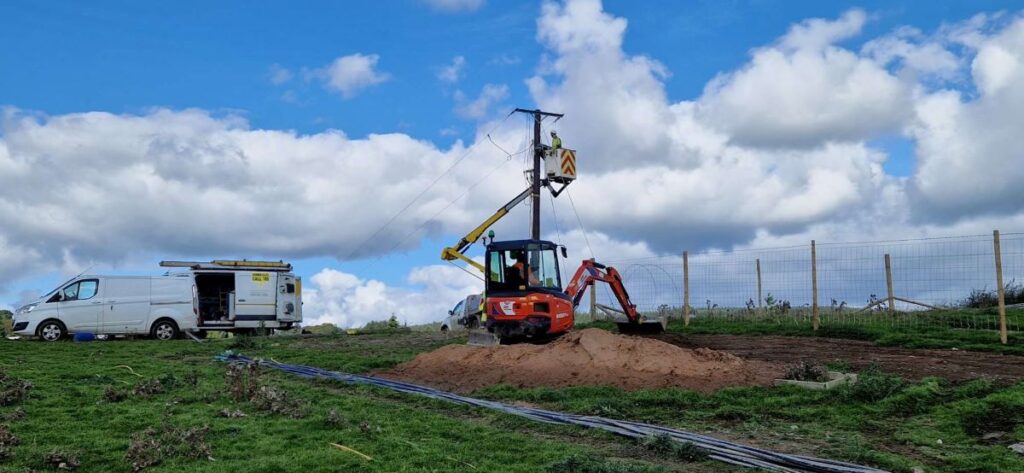
And this picture gives you an idea of where the DNO substation (tan color) and our switchgear (green box) are:
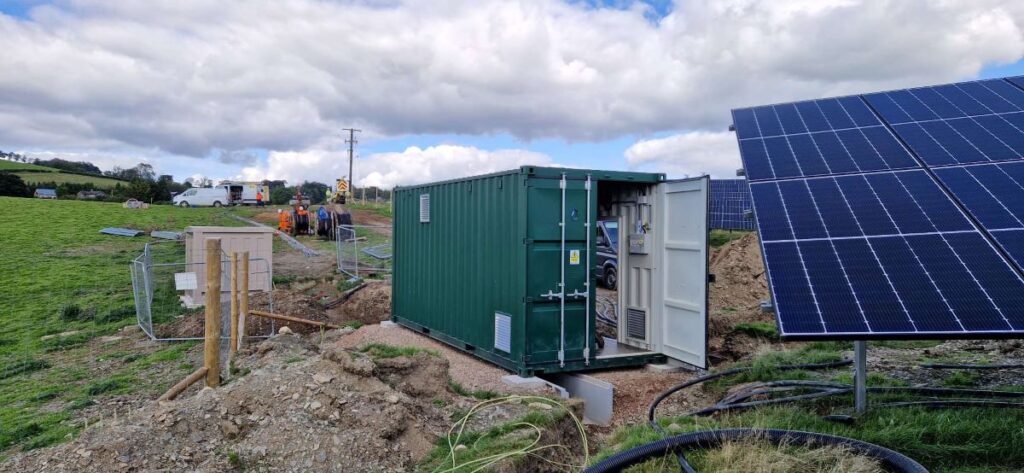
Hilariously while I was driving to the site and back, we were also arranging to sell the power. I got quotes from 4 companies, and agreed a price and signed the documents on my mobile phone at a cafe near the site. I won’t say who I sell it too until its officially on their website (we might get an entry on their map of generators). As for the price? Its not bad. Certainly way higher than when I started this project, but my costs have shot up too, so hopefully its ok. I estimate break even in 13 years, which is kind of insane, but when you look at valuation of stocks, in a way thats a price/earnings ratio of 13, which is actually sort of reasonable? However, I suspect we will see short term rises in energy prices and long term falls, so it really depends on how things work out in terms of govt policy favoring renewables/heat pumps/ EVs and the ability to build out large scale energy supply. Anything could happen. In terms of how competitive the market is, there was a range of prices. The company I chose offered the most, but not by much, and it does look like there is real and genuine competition. I had to sign by 3PM that day to get the quoted offer, as it changes daily, but I chose to lock in that price for a year. In future I might choose longer term locks.
Amusingly, we get paid for the power monthly, which is more frequent than I get for console video games I own the IP to. Even the staid old dinosaur energy industry can pay monthly, within 10 days. Take note, video game publishers!
The next big step will be energizing the site, a day on which I am determined to get drunk afterwards, and then we will have the first few stats to obsess over, and eventually the first actual income for this company of mine. Oh My God. There is a lot of ancillary stuff to do on site, like plant some trees, tidy things up, and some plants have grown too high for the sheep to cope with, so it all needs actually proper mowing once, after which the sheep should take care of keeping the grass down.
Anyway, enjoy this final picture. It is me pointing at one of the two (now inactive) overhead 11,000 volt lines that delayed this project by a year, cost me probably more than my first house, and drove me to actual real tears. Its finally gone, and not a problem. Its about the same thickness as the power cable plugged into this laptop.
